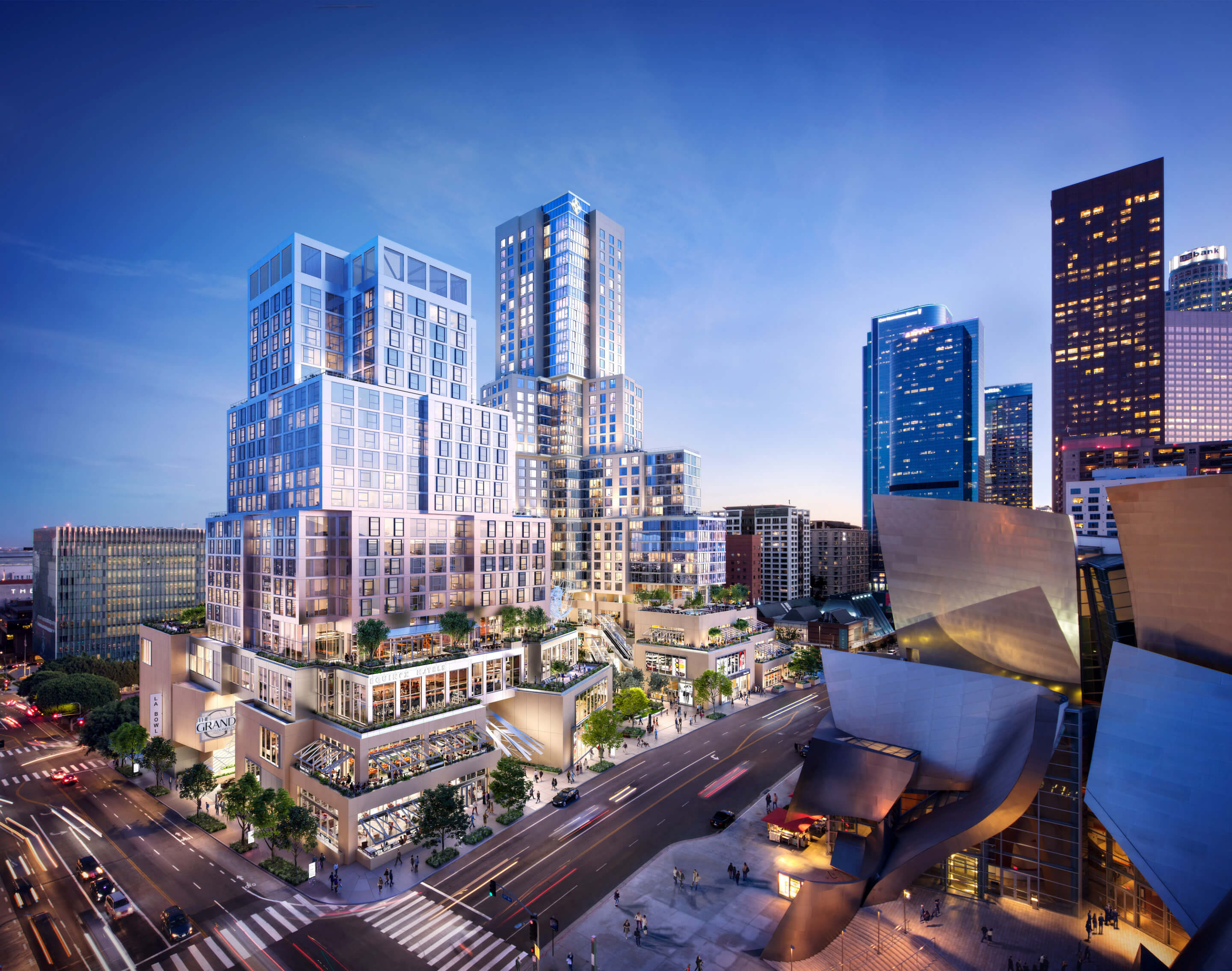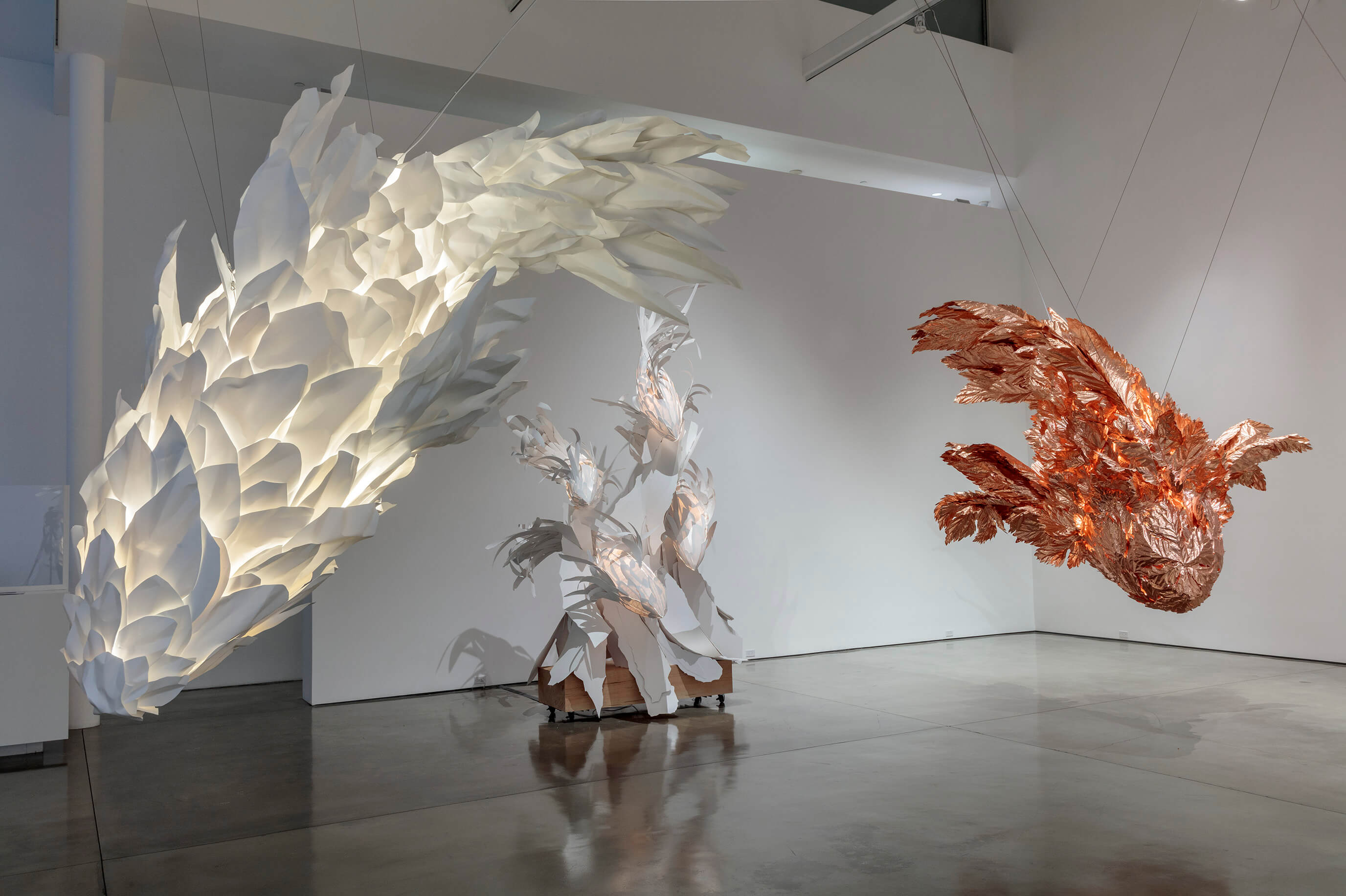Here’s a mental exercise: conjure, if you can, the artistic milieu of mid-to-late 1960s Los Angeles. This is the city of Billy Al Bengston, of Ed Ruscha and Ed Moses, of people doing their own thing and factories in Manhattan Beach turning out surfboards one day and Finish Fetish sculptures the next. Now try to predict—forgetting, for an instant, anything that has actually happened since—how that heady West Coast cultural ferment could have been translated into design. If it had to be done all over again, what kind of buildings might have emerged from the conceptual irreverence and aesthetic zaniness of that seminal moment?
Would they have looked like Frank Gehry’s? Maybe, maybe not. But sure enough, those are the buildings we got: in one of history’s more improbable turns, the prime architectural avatar for the wild and wooly postwar L.A. art scene ended up becoming the most influential, most dominant figure in design of the last quarter-century. This was by no means a given, and a great deal has been said over the years about how it happened; still more has been said in recent months, as a series of major media profiles have appeared reassessing the architect’s global impact as he cruises into his tenth decade. But a number of concurrent goings-on in Gehry’s adopted city reveal something of the innermost Frank, as well as how the city still figures in the Gehrian oeuvre.
In so far as Gehry is still very much a global architect (his recent Luma Arles Museum in the south of France certainly speaks to that point), he is peculiarly busy around the greater Los Angeles area at the moment. There is, for starters, his ongoing scheme to redevelop the Los Angeles River, planking over a stretch of the concrete-lined waterway with new public spaces that would sew the city back together and provide the surrounding communities with sorely needed green space. Downtown, there’s Grand LA, a multi-million-dollar mixed-use development on Bunker Hill directly across from the architect’s landmark Disney Concert Hall. There’s another multiplex development out on the Sunset Strip, and a new studio compound for Warner Brothers in Burbank. Seventy-four years after he moved there from his native Toronto, L.A. is looking more and more like Gehry Country.

Two undertakings in particular, both unveiled over the summer, illustrate how Gehry’s practice is presently situated in his home turf. In Inglewood, he recently completed work on the first permanent address for the Youth Orchestra of Los Angeles. An educational and outreach initiative of the Los Angeles Philharmonic—the same outfit for whom Gehry created Disney Hall—YOLA is now housed in a former bank building in the lower-income, minority-majority neighborhood of Inglewood; the Judith and Thomas L. Beckman Center, as the new facility is titled, gives the program a physical presence in the under-served municipality, just steps away from its Brutalist-inflected Civic Center. The adaptive-reuse design, contributed gratis by Gehry, is exceedingly stringent with none of his usual formal theatrics: the late-modernist exterior was preserved in toto (indeed restored, showing off the mosaic-tile detailing on its north and south flanks) while the interior has been stripped to its essentials and refitted with off-the-shelf pine-board wainscoting in the public spaces and a pared-down but acoustically sophisticated performance venue at its center. Coming in at a fairly economical $14.5 million, the project shows Gehry at his most resourceful, the same Wizard of the Hardware Store who fashioned his celebrated Santa Monica house out of 2x4s and chainlink.
In a very different neighborhood, and in a radically different context, this season also saw the debut of Spinning Tales, a multi-part exhibition at Gagosian’s Beverly Hills gallery. Opening in June and winding up in early August, the show was only the latest in an ongoing series of installations that Gehry has mounted for the international art behemoth (a group of fish-shaped lamps in Rome in 2016; more fish lamps in Athens two years earlier; still more in Paris before that) and this one too featured the designer’s favorite genus of marine life, with great big swimmy mobiles dangling from the ceiling in the main downstairs space. Upstairs, however, was something quite different: for reasons that were by no means apparent, Gehry elected to create an oversized rendition of the Mad Hatter’s tea party from Alice in Wonderland, with eight-foot-tall abstract figures representing the fictional celebrants hewn from colorful assemblages of metal and mesh. Putting aside the obvious question of why, the piece seemed most striking as a pointed reassertion of Gehry’s artistic prerogative. I can do whatever the hell I want, it appeared to be saying. Don’t dig it? Nuts to you.

It’s not an endearing attitude, but it is a familiar one—this is, after all, the man who once lifted a middle finger to a journalist when reproached for the formal spectacle of his buildings. On the other hand, one could hardly imagine a more fitting posture for the devil-may-care group of artists with whom Gehry was associated during the earliest phase of his career. Rattling around the internet is a photo, taken circa 1968, of the architect piled into a sort of human centipede with a few of his artsy L.A. companions: Larry Bell, Bengston, John Altoon, all marching in lockstep through the LACMA campus. They’re plainly amused by their own puckishness, yet they had reason to be: hard as it may be to recreate mentally, the affective standoffishness of that cultural moment wasn’t just done for kicks; its objective was political liberation, a generational thumbing-of-the-nose at the whole institutional apparatus of midcentury America. It’s worth recalling that Gehry returned to L.A. in the late 1950s, and to its just-emerging art world, after a frustrating spell at Harvard, one that culminated (as recounted in Paul Goldberger’s 2015 biography) with a senior faculty member rejecting a socially conscious, pedestrian-oriented project from the future starchitect. Gehry’s response? “Go fuck yourself.”
So it is with the designer today, pursuing his wayward course across the Southern California metropole. Both the scrappy, DIY earnestness of YOLA and the extravagant, weirdly impertinent artistry on display in Beverly Hills—along with all his other doings, high and low, across the Los Angeles basin—proceed from the same impulse, rooted in the same distinctly Angeleno sensibility. Like the city itself, you can love it or hate it. But you’ll probably end up doing both.











